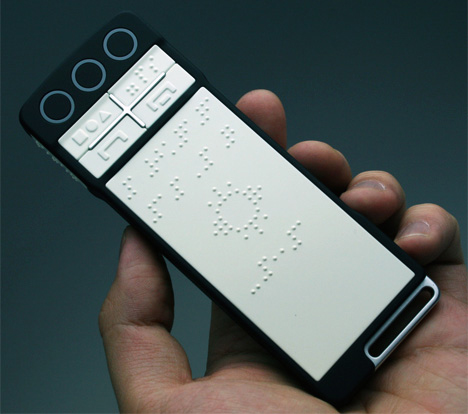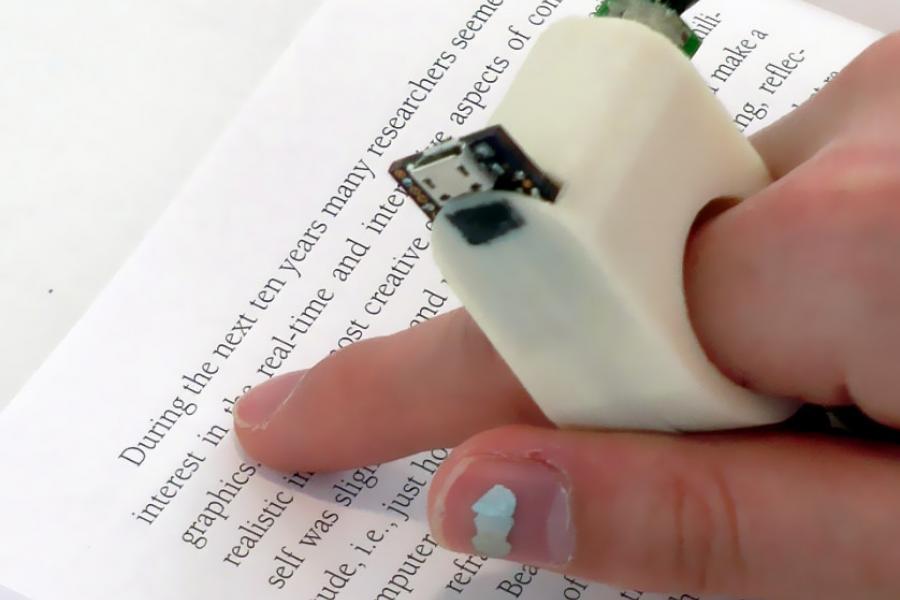Empowering Self-reliance With Assistive Technology for the Blind
The assimilation of assistive technology into the lives of individuals with aesthetic disabilities stands for a considerable advancement in advertising self-reliance and self-sufficiency. From cutting-edge display viewers to advanced clever walking sticks, these tools not only improve daily navigating and interaction but likewise encourage individuals to engage meaningfully in different aspects of life. As we check out the myriad advantages and real-world applications of these technologies, it ends up being critical to take a look at the underlying factors that add to their performance and the potential for future growths in this important area.
Overview of Assistive Technology

The growth of assistive modern technology is based in concepts of inclusivity and empowerment. Developments in software, hardware, and sensory enhancements supply customers with choices tailored to their particular needs. From screen viewers that transform text to speech, to tactile gadgets that convey details via touch, these tools transform the way individuals involve with their environments.
In enhancement to sensible applications, assistive innovation cultivates better social addition and involvement in different fields, consisting of education and employment (Smart glasses for the visually impaired). As research and development continue to develop, the capacity for assistive innovation to additionally boost the lives of aesthetically damaged individuals remains encouraging, leading the way for a much more fair culture where everybody can grow
Kinds Of Assistive Devices
A variety of assistive devices have emerged to support people with aesthetic disabilities, each designed to satisfy details requirements and boost day-to-day performance. These devices vary from low-tech solutions to state-of-the-art developments, supplying diverse alternatives for individuals.
Low-tech gadgets consist of magnifiers and large-print products that aid in analysis and writing. Braille tools, such as Braille stylus pens and slates, allow tactile reading and communication. Orientation and mobility help, like white walking sticks, aid individuals browse their environment safely.
On the higher end of the range, electronic magnifying systems and display visitors provide substantial support. Digital magnifiers enable individuals to enlarge text and photos on screens, while display readers transform electronic content into manufactured speech, assisting in access to information on smart devices and computer systems.
Smartphone applications additionally play a crucial function, providing attributes like message recognition and navigating aid. Wearable technology, such as wise glasses outfitted with augmented fact, is becoming a promising device to enhance situational recognition.
Benefits of Assistive Technology
The assimilation of assistive innovation considerably boosts the lifestyle for have a peek at this website people with aesthetic disabilities. These innovations equip customers by promoting self-reliance, allowing them to navigate their settings better and do day-to-day jobs with greater ease. For circumstances, display visitors and zoom software permit individuals to gain access to electronic details, fostering specialist and academic possibilities that may have formerly run out reach.
Moreover, assistive gadgets such as wise canes and general practitioners applications offer real-time navigation help, enhancing movement and safety. This enhanced freedom not just improves self-confidence however additionally urges social interaction, permitting individuals to take part more fully in their communities.
Assistive innovation additionally promotes communication, aiding users get in touch with others through voice acknowledgment and text-to-speech applications. This ability is crucial for preserving partnerships and accessing critical information.
Furthermore, the modification alternatives offered with numerous assistive innovations guarantee that users can tailor gadgets to their certain demands, even more boosting use and effectiveness. In general, the benefits of assistive technology for individuals with aesthetic impairments are extensive, advertising a much more inclusive society where everybody can seek their goals and desires.
Study and Success Stories
Highlighting the transformative effect of assistive innovation, numerous study show how people with visual impairments have successfully incorporated these devices into their day-to-day lives. One compelling example includes a college trainee that made use of display analysis software application to navigate on-line sources and academic materials best site successfully. This innovation not just promoted her education and learning but additionally improved her confidence in taking part in conversations and group tasks.
Another instance research includes a specialist that uses a mobile phone application created for navigating and object recognition. By utilizing this application, he has restored autonomy in both his personal and work settings, permitting him to commute separately and involve with colleagues extra efficiently.
Furthermore, a senior citizen shared her experience with braille e-readers, which enabled her to access a substantial array of literature and remain linked with her community via publication clubs.
These success tales highlight the critical role of assistive technology in cultivating independence, enhancing lifestyle, and promoting social assimilation for people with visual impairments (Wearable technology for low vision). By embracing these innovative devices, users can overcome challenges and take opportunities that add to their specialist and personal gratification

Future Trends in Assistive Technology
Innovation in assistive technology is poised to redefine the landscape of support for individuals with aesthetic problems. Arising trends stress the assimilation of expert system (AI) and artificial intelligence, which improve the functionality of tools that aid with navigation and information accessibility. AI-driven applications are currently qualified of analyzing aesthetic data in real-time, allowing customers to involve with their setting extra separately.
Furthermore, the development of wearable innovation is advancing rapidly. Smart glasses furnished with augmented fact (AR) can give audio descriptions of surroundings, transforming just how users engage with public rooms. These gadgets not just advertise freedom but additionally foster social incorporation.
Furthermore, the Internet of Things (IoT) is making homes smarter, permitting seamless connection in between assistive devices and everyday devices. This connectivity empowers individuals by making it possible for automated feedbacks and voice-activated controls customized to private needs.
Verdict
Finally, assistive technology plays a pivotal role in encouraging people with aesthetic impairments by enhancing their self-reliance and involvement with their environments. The varied series of applications and gadgets offered not just promotes navigation and interaction but additionally promotes social combination and opportunities for professional and personal growth. As developments continue in this field, the capacity for improving the quality of life for those with visual impairments will certainly expand, cultivating higher autonomy and empowerment.
